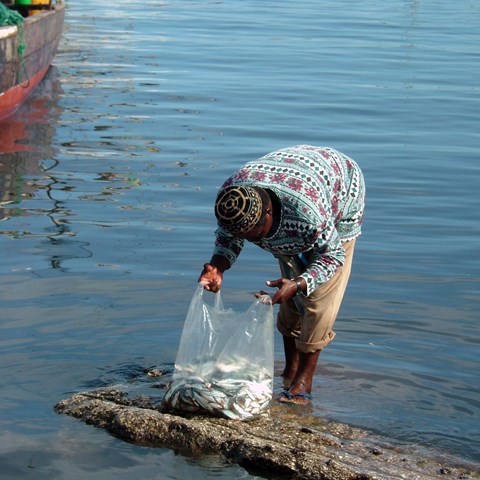Contact
Charlotte Berkström, Researcher
Department of Aquatic Resources, Institute of Coastal Research, SLU
charlotte.berkstrom@slu.se, +46 10 478 41 65

How will climate change effect people's access to nutritious food from the ocean, especially those living in coastal areas and in small island nations? A research group from the Swedish University of Agricultural Sciences will study this in the new research project "Vitamin Sea".
Fish and shellfish contain vitamins, minerals and trace elements that are vital for human health. However, climate change can effect the distribution and availability of species, with serious consequences for people who are highly dependent on these marine resources. People in coastal areas and small island nations, especially in low- and middle-income countries, are particularly sensitive to changes in the availability of nutrients from aquatic foods, as alternative sources do not always exist.
The research team will be working with data from Tanzania, the Solomon Islands and Timor-Leste. By modelling how different climate scenarios effect marine food webs, and thus access to nutrients, the researchers hope to predict changes and identify particularly vulnerable areas in need for management, as well as contribute to strategies to strengthen local communities in the face of future challenges.
– Our study areas are located in regions where the largest share of protein intake comes from fish and shellfish. Therefore, it is particularly important to both understand and map how the availability of marine resources, and their nutrient content, is changing with global warming in order to then manage them in the best way, not only today, but also for future generations, says Charlotte Berkström, a researcher at the Department of Aquatic Resources at the Swedish University of Agricultural Sciences and the leader of the project.
The researchers will identify changes in nutrient availability using data already collected on fish, environmental variables and marine food webs. They will then model how nutrient availability is effected by different climate scenarios. The researchers will do this using newly developed statistical methods. The results will then be visualized in the form of different layers in a map where the layers show nutrients in fishing waters and are based on species-specific distribution patterns of fish.
– The layers in the maps will display the situation we have today and also how we can expect the marine food landscape to change over the next 30 years, says Charlotte.
The project is funded by the Swedish Research Council, and will run until November 2026. SLU is leading the project together with partners from WorldFish and Tanzanian Fisheries Research Institute (TAFIRI).
Charlotte Berkström, Researcher
Department of Aquatic Resources, Institute of Coastal Research, SLU
charlotte.berkstrom@slu.se, +46 10 478 41 65
Read a report on aquatic food written by SLU and WorldFish: Aquatic foods crucial for sustainable, nutritious and equitable food